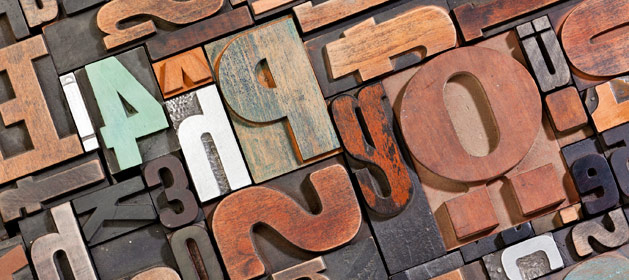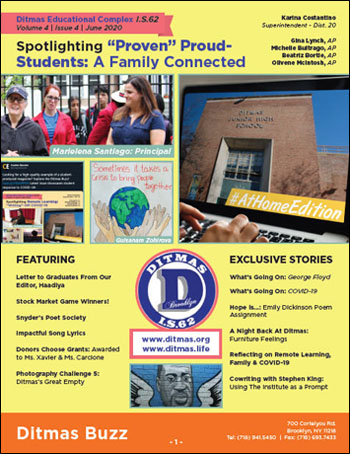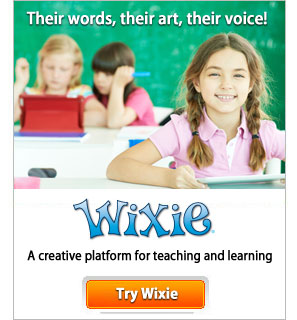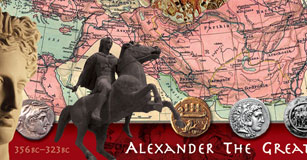Publish a Digital Magazine
Students take the lead and design and create their own digital magazine.

Task
While many print magazines have online counterparts, digital magazines exist only online. Print and online magazines share similarities in content but differ greatly in layout.
In this project, you will look at both print and electronic magazines and use what you learn to create your own digital magazine that will educate your classmates and community about issues important to you. Articles are the most obvious form of content, but you may also choose to include a letter from the editor, letters to the editor, interviews, and/or advertisements in the form of written promotions, images, or even video.
Engage
Engage students in a conversation about the magazines they read or have seen at home or in the store. Bring in samples of different types of printed magazines and/or ask students to bring in their own samples. Talk about the various topics the magazines address. Why are there so many different topics? What is the benefit of a magazine?
Work together to list common features you find in magazines, such as a table of contents, a letter from the editor, letters to the editor, columns, etc.
Next, ask students if they have read articles online. Give students time to explore examples of digital magazines and work together to compare traditional magazines to online versions. How does, or can, digital distribution make for a different experience?
Have students examine and analyze the benefits of including mixed media, links to other sources, and a variety of articles. Evaluate the design, including layout, graphics, colors, and fonts and how these items can add to or even detract from the subject.

Ditmas IS 62 K, Brooklyn District 20- Principal Marielena Santiago and AP Michelle Buitrago as well as Teacher team Michael Downes, Amanda Xavier and Angelo Carideo; Dr. Reissman Support.
You may choose to work as a class to develop a comprehensive single edition magazine around a topic you are studying, create a recurring digital magazine that shares classroom learning with family and community, or give students creative control to decide what their message, or messages, will be each issue.
Before beginning research, students need to determine and clearly define the audience and purpose for the magazine, asking questions like:
- Should we present just one view or both sides of a topic or issue?
- What fresh insight can the editors and writers bring to the issues?
- What elements are needed to create a digital magazine that compels readers to start (or keep) reading?
Create
As a class or small group, develop a vision and organizational structure for the magazine. Determine which articles, letters, advertisements, and/or interviews need to be created and assign them based on interest and ability.
Have each student research information, and/or opinions, relevant to the piece they are creating. If your goal is to build skills in informative and/or persuasive writing, be sure each student contributes a written article. Check in with students as they take notes to check for understanding. Have students peer-review each other’s rough drafts before submitting or adding a final version of the article.
Discuss design ideas as a team. Have each team member create a design sketch for the team to choose from or assign the task of design to a visually gifted student. If you are using a tool like Wixie, adjust background to create a template you can use over and over for consistent design.
To build visual communication skills, have each student develop appropriate graphics to support their text or design advertisements. You could also assign the role of Media Director or Art Director to one student to serve as the consultant for the multimedia elements of the project.
Students should share their content with an "editor" before adding to the project. The editor(s) can be tasked with checking for typos and incorrect grammar in written articles.
Share
When the issue is complete, publish it online or export as a PDF for easy distribution. Be sure to verify navigational links and accuracy of the Table of Contents or home page.
If the magazine is a periodical about classroom learning, post it to your teacher site and/or email it to parents and family members. If small teams have created focused magazines that summarize classroom content learning, add them to your teacher web site as a review resource.
Share student work through social media for other students and educators to benefit from or use as an informational resource.
Your librarian/Media Specialist may also be interested in publishing student work in the media center.
Assessment
What you assess in the project will depend on your learning goals for student work. Their analysis and comparisons of print and electronic magazines provides a window into their media literacy and ability to think critically. Effective organization and design also demonstrate proficiency with modern communication and media literacy.
You can evaluate the students’ informative and persuasive writing in the text of articles included in the magazine (see ELA writing standards below). Use student research notes, outlines, and article drafts for formative assessment during the writing process.
Evaluate teamwork through behaviors centered around cooperation, planning, task assignments, and problem-solving.
Resources
Baker, Frank W. Media Literacy. Eugene: ISTE, January, 2012.
Pettinato, Minot. "Advantages & Disadvantages of Online Magazines" eHow. 3 April, 2013.
My-Say www.my-say.org
The Voice - from Kingswood Oxford School
One Report - A spiritually-minded publication for and by young people
Standards
Common Core Anchor Standards for English Language Arts - Grade 6-8
Writing Theme
Text Types and Purposes
1. Write arguments to support claims in an analysis of substantive topics or texts using valid reasoning and relevant and sufficient evidence.
2. Write informative/explanatory texts to examine a topic and convey ideas, concepts, and information through the selection, organization, and analysis of relevant content.
Production and Distribution of Writing
4. Produce clear and coherent writing in which the development, organization, and style are appropriate to task, purpose, and audience.
5. Develop and strengthen writing as needed by planning, revising, editing, rewriting, or trying a new approach.
6. Use technology, including the Internet, to produce and publish writing and to interact and collaborate with others.
Research to Build and Present Knowledge
8. Gather relevant information from multiple print and digital sources, assess the credibility and accuracy of each source, and integrate the information while avoiding plagiarism.
ISTE NETS for Students 2016:
3. Knowledge Constructor
Students critically curate a variety of resources using digital tools to construct knowledge, produce creative artifacts and make meaningful learning experiences for themselves and others. Students:
a. plan and employ effective research strategies to locate information and other resources for their intellectual or creative pursuits.
b. evaluate the accuracy, perspective, credibility and relevance of information, media, data or other resources.
c. curate information from digital resources using a variety of tools and methods to create collections of artifacts that demonstrate meaningful connections or conclusions.
d. build knowledge by actively exploring real-world issues and problems, developing ideas and theories and pursuing answers and solutions.
6. Creative Communicator
Students communicate clearly and express themselves creatively for a variety of purposes using the platforms, tools, styles, formats and digital media appropriate to their goals. Students:
a. choose the appropriate platforms and tools for meeting the desired objectives of their creation or communication.
b. create original works or responsibly repurpose or remix digital resources into new creations.
c. communicate complex ideas clearly and effectively by creating or using a variety of digital objects such as visualizations, models or simulations.
d. publish or present content that customizes the message and medium for their intended audiences.









